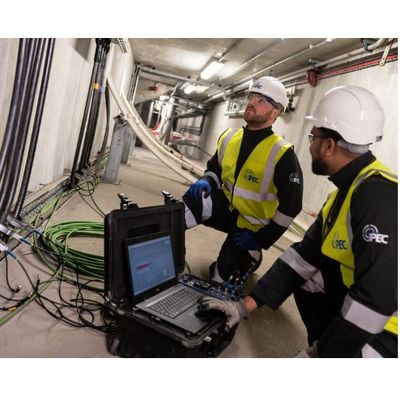


IPEC - Model PrecisePD - On-Line Partial Discharge Spot Testing and Location System
PrecisePD is an on-line Partial Discharge Spot Testing and Location System for Cables and Switchgear with advanced signal processing, used for the detection of PD in high noise environments. PrecisePD allows users to investigate and locate Partial Discharge sources on live electrical equipment, helping to prevent potential faults in high voltage assets. Designed by IPEC Ltd, the PrecisePD Spot Tester takes advantage of the many years of IPEC’s field experience. Using the advanced DeCIFer (designed to operate in high noise environments) the unit offers significant advantages over many other Spot Testing systems.
PrecisePD is a simple to use product for routine operation, additionally incorporating more advanced features for the experienced engineer to completely analyse and see a clear picture of discharge activity. The built in reporting system collates the necessary data and information for subsequent detailed analysis where required.
- Sensitive PD detection in high noise environments
- Test cables up to 4km in length
- Accurate Cable PD Mapping for defect location
- Integrated cable length measurement
Personnel Safety Device
ensure the substation is clear of PD before conducting work
auto separation when the device detects background Noise instead of real PD
fits in the user’s pocket and Is easy to use
allowing a whole day of testing without requiring a recharge
- Rapidly survey the whole substation – detects MV and HV problems before they occur
- Remote Data Storage – ensure all data is recorded from each site test
- Trend – log the PD against individual assets and view data from each test ever conducted
- PRPD – Phase Resolved Partial Discharge (PRPD) can be displayed on the device or mobile app to help PD analysis
- Advanced Noise Separation – device detects PD in higher noise environments and automatically separate PD and Noise level, no more false positives
- Central data collection – all data stored on central server for analysis
